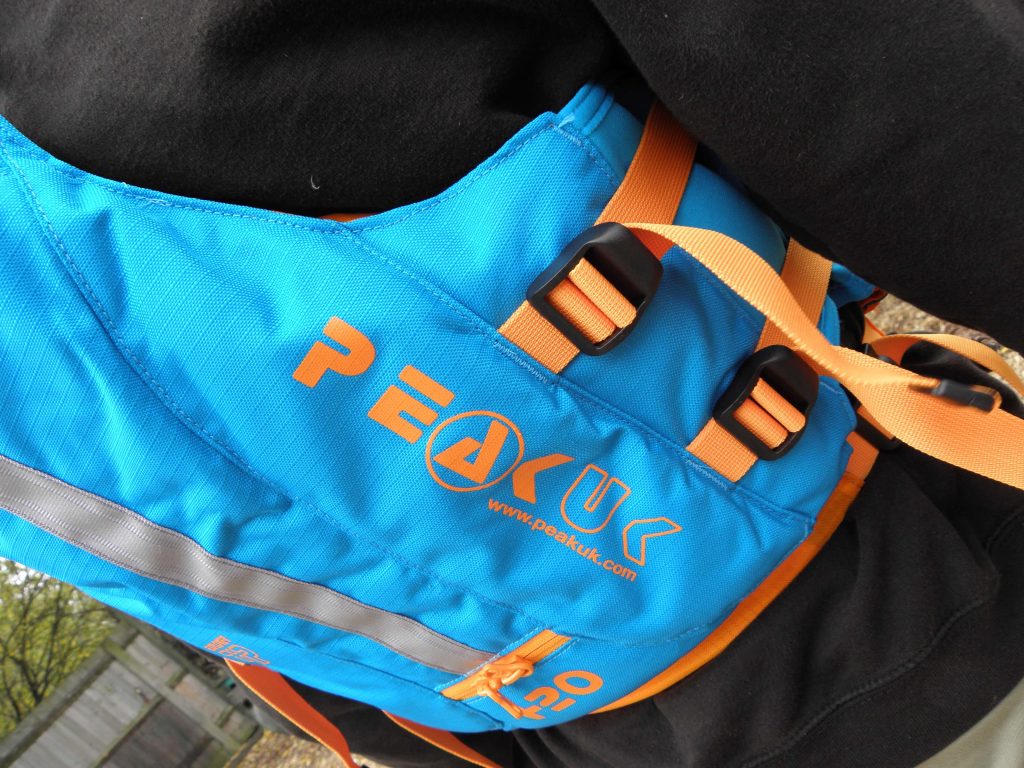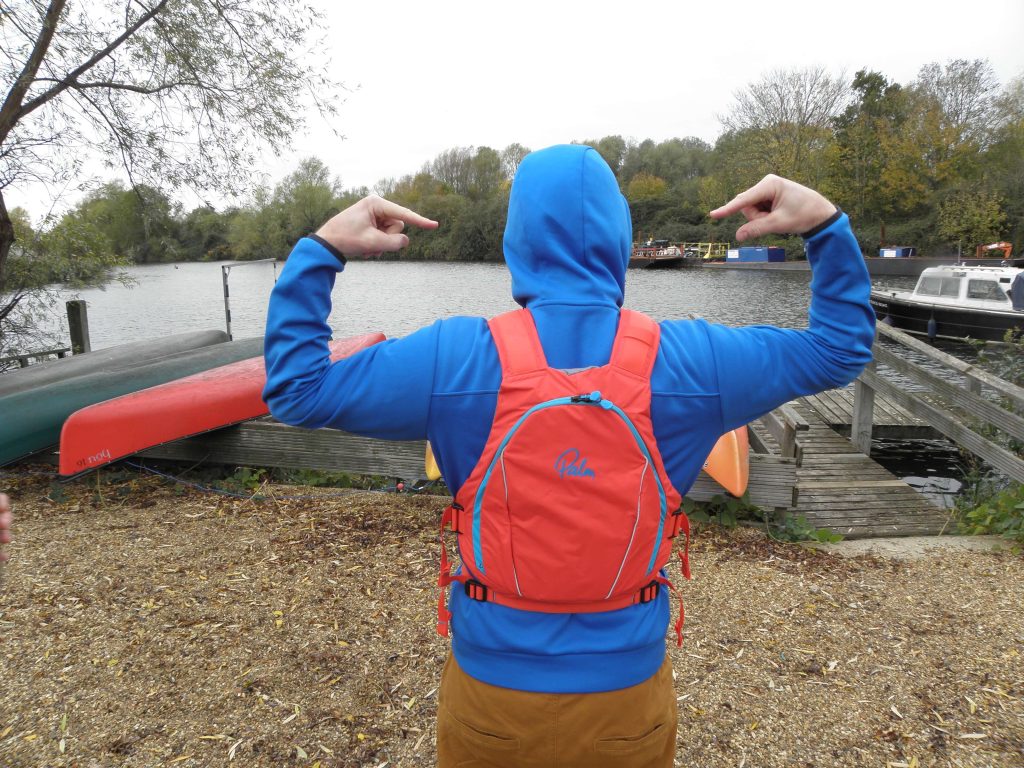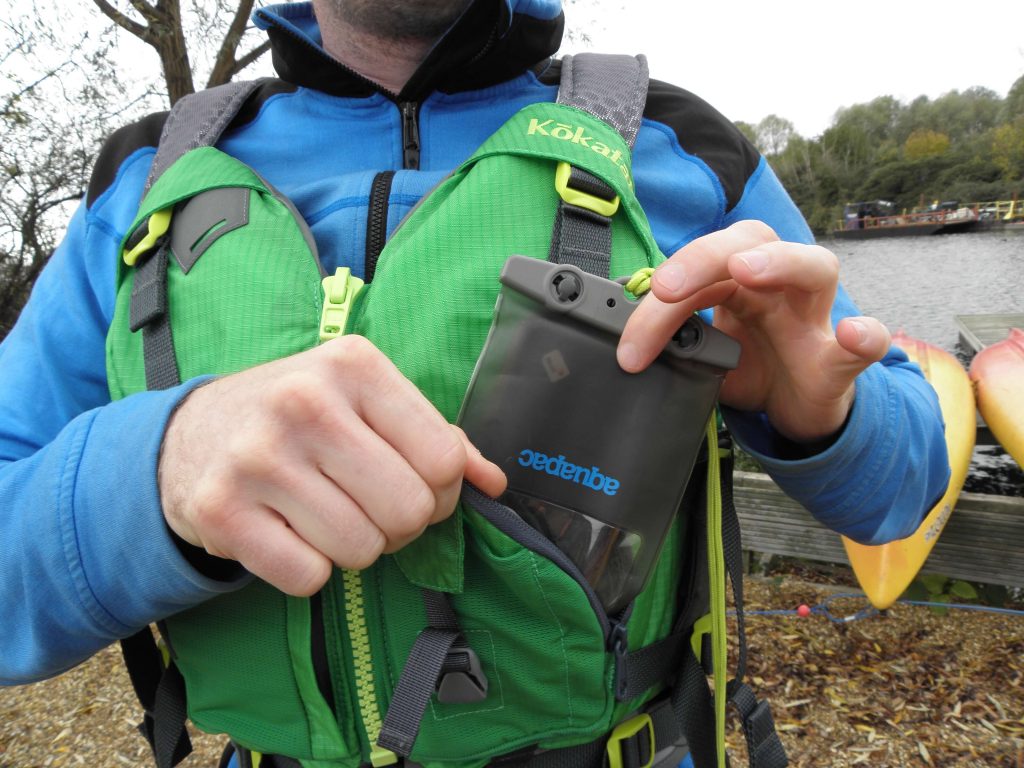Top Picks: Touring PFD’s

Being based on the Thames, all apart from perhaps 3 weeks a year, canoe and kayak touring is the order of the day. As such, we spend a lot of our time comparing, contrasting and discussing the merits of different touring PFD’s (personal floatation devices) both in the office and with customers. The same points always get raised when new and existing buoyancy aids get discussed: what is the fit like, how good are the pockets, how well does it float, and how well do the materials hold up?
We compared all these front opening PFD’s in house, using the same member of staff to try on each one and compare the fit. To test the pockets we used a Huawei P20 Pro in an Aquapac (one of these modern larger style phones) and a largish, tasty, fudge flapjack. All the buoyancy aids meet or exceed the relevant ISO standards that determine the strength, buoyancy and longevity of these essential bits of kit.
So, let’s get comparing! Here are our top four touring PFD’s for under £150.
Peak Explorer Zip PFD
First up for our quartet of PFD’s is the newly revamped Peak Explorer Zip PFD. The structure and materials used have stayed the same on this latest version but we for 2020 we’ve got some stylish new colourways.

While the Peak Explorer Zip’s broad front might appear uncomfortably wide and flat at an initial glance, the use of the exceptionally flexible, environmentally friendly Gaia Foam, allows the PFD to wrap around the torso very comfortably straight off the shelf while providing 55-70N of flotation (the L/XL has 65N). As you would expect from an Olympic Slalom based design a low cut under the arms allows for an excellent range of motion with little to no snagging.
Final fit is achieved via three 25mm webbing straps on each side of the Explorer that allow for easy adjustment by pulling forward to tighten, however the shoulder straps are a little more fiddly to get right. Peak have opted for a “figure hugging” system that doesnt leave a webbing tail hanging down and therefore offers clean lines. The range of adjustment is excellent but you really need to have spent a couple of minutes before getting on the water getting this right, otherwise its not an easy thing to adjust while wearing it ,especially if the plastic ladders are tucked under the padded shoulder covers. Hopefully for most people this will be a do it once and forget about it type of job.

What really secures the Peak Explorer Zips position as one of our top three touring PFD’s is the pocket configuration; using only plastic zips, the Explorer boasts four exceptionally functional and spacious pockets – with 2 horizontal and 2 vertical opening – on the front, as well as a dedicated pocket for a hydration bladder, that allows the wearer to choose to locate the hose over either shoulder or under their arm, on the rear of the PFD. Both panels on the front of the PFD have symmetrical pocket configurations, designed to be able to fit VHF’s and flares with ease. All four pockets easily passed our flapjack and mobile in an Aquapac test. The use of only plastic zips on the entire PFD helps to increase the lifespan of the product, especially if regularly used in salt water, as the parts are far less vulnerable to corrosion. The Explorer also has two 25mm webbing loops – one on each side – above the front pockets to allow the wearer to attach a hydration hose clip.

Coming in the heaviest out of the four PFD’s we tested, the Peak Explorer Zip L/XL weighs 1160g, however it is made of the most durable material of the lot; the Explorer Zips shell is made using 600d ripstop polyester and nylon.

Palm Peyto PFD
While not the cheapest of the PFD’s we are looking at in this blog, the Palm Peyto makes a fantastic entry point into touring PFD’s. Comfort is the Peyto’s biggest selling point, with only two strap sides to adjust getting a secure fit particularly quick – both the 25mm waist strap and 38mm chest strap pull forward to tighten . The shoulder straps are also simple to adjust and its possible to tidy away any excess webbing in the tuck pockets at the base of the shoulder and chest straps. Palm’s “Comfort Fit” feature – acheived by glueing together layers of soft foam that conform to your body shape – is particularly noticable around the edges of the widest section of the panels where the foam has been tapered and means that there is plenty of room under the armpit area, and despite a higher front there is surprisingly little resistance when tucking forward to roll. The only downside to the two strap system is, if like me you end up with the straps done most of the way up, your arm can rub against the large buckle that is used to adjust the 38mm ‘chest’ webbing .

The M/L Peyto does provide a very reassuring 71N of buoyancy which is greater than all three others reviewed in this article.

Another massive plus point for the Peyto is the women’s size options. Available in women’s XS/S, M/L and XL/XXL, this PFD to be super popular.

The pocket configuration on the Peyto, while simpler to the Peak Explorer Zip and the Kokatat Neptune (we will discuss next), still works fantastically. Two large chest pockets with vertical zippers provide ample space for a VHF radio or, using our test pieces, plenty of space for a phone in an Aquapac and a flapjack. The front of the BA also boasts two very comfortable, fleece lined, handwarmer pockets to make the times you’re hanging around more comfortable. The rear of the Peyto also has a dedicated pocket for a hydration bladder, with sewn loop and clip on the right hand side of the PFD to make it easier to keep the hose tidy and accessible. Again Palm have used a YKK plastic zip to improve the lifespan of the product and prevent corrosion. Weighing in at 1040g it is also the second lightest of the lot (M/L size) as Palm opted for a lighter weight 200D nylon face fabric, a point worth bearing in mind if you are going to put your PFD through a particularly hard time.


Kokatat Neptune PFD
The next PFD we’re going to discuss in this blog is the Kokatat Neptune. Again the Neptune is a front zip entry PFD, using a plastic zipper, with eight adjustment points for the 25mm webbing straps; three on each side and two shoulder straps. Kokatat have seriously considered where the adjustment points are positioned on the PFD with everything on the Neptune is situated at the front of the PFD for ease of use. No more struggling to reach behind you to find that pesky webbing. However while we got a secure fit the straps dont ‘glide’ as easily as some others so attention is needed to ensure that they are fully tightened. This system does also leave the front of the Neptune looking a little untidy if your at the lower end of the size range with no way to secure the webbing tails.

In terms of comfort the Neptune uses super soft Gaia foam for buoyancy, with the foam arranged in seven individual panels – 3 on each side of the front and one large piece in the rear – allowing the Neptune to really hug around you. Some people will find the side panels a little bulky under the arms but generally this is very comfortable to wear especially if you persevere with those straps and get them good and tight which holds the side panels in, and we all really like the way the shoulder straps have some independent stretch and movement. We did feel however that there was limited shoulder adjustment and some of us would like to be able to have it sit lower on our torso. While this is less of an issue when you’re kayaking and maybe even a good thing when using a waist tow system, it could be a bit annoying when open boating.


The Neptune does boast the largest number of pockets – five- on the front of the BA, two of which are designed specifically for your VHF and knife. Unfortunately the Neptune’s pockets did not pass our in house test, only able to fit the flapjack and not the Aquapac with a phone in.
There are however some nice fleece panels on the inside of the to keep your hands warm against. The Neptune doesnt have a zipped rear pocket for hydration but does offer a sleeve on the rear panel with an opening at the bottom to allow a bladder to passed through and hung from the clip at the top, or there are attachment points that can be used to attached the Kokatat Tributary hydration system. These same points found at the base of the shoulder straps on the back of the Neptune and the one on the front right hand side can also be used for lights or knife attachment.
The Neptune was the second heaviest of the PFD’s, weighing in at 1050g, and provided the second highest floatation for an M/L, offering 69N. The Neptune shell is made from 210D high tenacity rip-stop nylon.

Yak Xipe 60N
Up next is the Yak Xipe 60N, a PFD that has been around a while and is a genuinely fantastic option for anyone who wants a touring PFD, with plenty of pockets, but is on a budget.

Two exceptionally generous front pockets, with twin zips, allows ample space for radio’s, PLB’s (personal location beacons) and safety equipment, with the pockets passing our phone and flapjack test with ease. A mesh inner pocket also makes it far easier to keep those smaller items safe, and the rear hydration pouch is exceptionally easy to use. Plastic zips on all the pockets and main entry help improve the lifespan of the product.

The Xipe 60N has a simple side adjustment system, which is particularly easy to use. I have to say the Xipe was rather comfortable under the arms and when tucking up, however did feel a tad squat in the body, like the Neptune. Again this would only be a problem when canoeing or stand up paddling.

The Xipe M/L comes in with 60N of buoyancy and weighs only 950g, meaning it is the lightest weight of all the PFD’s. The shell material doesn’t have quite the same robust feel as the other offerings in this blog, however at the price point it is a fantastic option definitely worth considering.

So…
To summarize, there is a great choice of touring PFD’s available but the best one for you will truly be the one that fits the best. As always, particularly at this time of the year, the kettle is on so come on down, have a chat and find the PFD that works best for you!

Comments
Powered by Facebook Comments